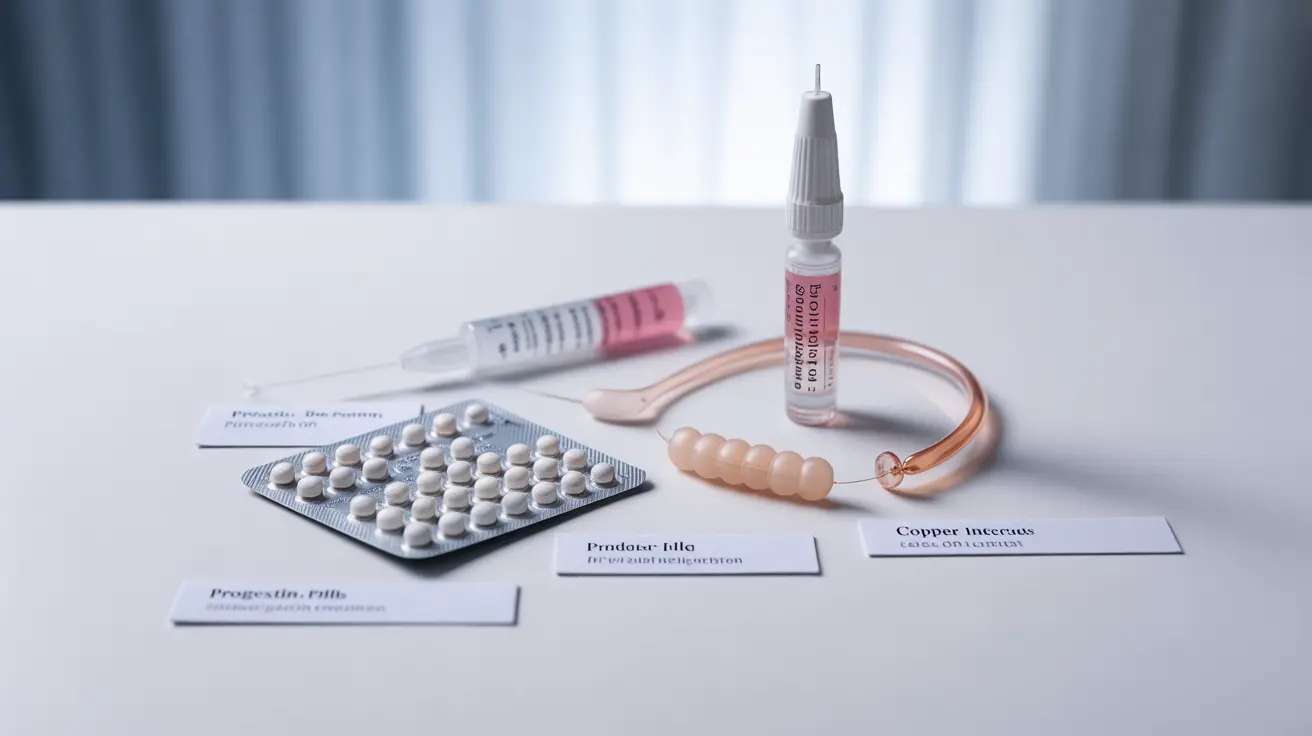For many individuals seeking contraception, non-estrogen birth control options provide effective alternatives to traditional combination hormonal methods. Whether you're unable to take estrogen-containing contraceptives due to medical conditions, are breastfeeding, or simply prefer to avoid estrogen, there are several reliable options available that can help prevent pregnancy.
In this comprehensive guide, we'll explore various non-estrogen birth control methods, their effectiveness, how they work, and what you can expect when using them.
Types of Non-Estrogen Birth Control Options
Progestin-Only Pills (Mini-Pills)
The progestin-only pill, commonly known as the mini-pill, is a daily oral contraceptive that contains only progestin. This method works by thickening cervical mucus, preventing sperm from reaching the egg, and sometimes suppressing ovulation.
Key features of the mini-pill include:
- Must be taken at the same time each day
- Suitable for breastfeeding mothers
- No estrogen-related side effects
- 99% effective when used perfectly
Injectable Contraception (Depo-Provera)
The birth control shot provides long-acting contraception through regular injections of progestin every three months. This method effectively prevents pregnancy by stopping ovulation and creating additional barriers to conception.
Copper IUD
The copper IUD is a completely hormone-free option that provides up to 10-12 years of contraception. This small T-shaped device works by creating an environment that's hostile to sperm while also preventing implantation if fertilization occurs.
Understanding Effectiveness and Benefits
Non-estrogen birth control methods offer several advantages:
- Reduced risk of estrogen-related complications
- Suitable for those with certain medical conditions
- Options for both short-term and long-term contraception
- Various delivery methods to suit different preferences
Common Side Effects and Considerations
While non-estrogen methods eliminate estrogen-related risks, they may have their own side effects. These can vary depending on the specific method chosen:
Progestin-Only Methods
Common side effects may include:
- Irregular menstrual bleeding
- Headaches
- Mood changes
- Breast tenderness
Copper IUD
Potential effects include:
- Heavier periods
- Increased cramping
- Initial spotting
- Temporary discomfort during insertion
Frequently Asked Questions
What are the most effective non-estrogen birth control options available?
The most effective non-estrogen birth control options include the copper IUD (99.2% effective), injectable contraception (94-99% effective), and progestin-only pills (87-99% effective when used perfectly). The copper IUD offers the advantage of being both hormone-free and providing long-term contraception.
How do progestin-only birth control methods like the minipill and shot work to prevent pregnancy?
Progestin-only methods work primarily by thickening cervical mucus to prevent sperm from reaching the egg, thinning the uterine lining to prevent implantation, and in some cases, suppressing ovulation. The shot (Depo-Provera) consistently prevents ovulation, while the mini-pill may or may not stop ovulation depending on the individual.
What are the common side effects and risks associated with progestin-only birth control?
Common side effects include irregular bleeding patterns, headaches, mood changes, and breast tenderness. Some users may experience weight changes or acne. While serious complications are rare, it's important to discuss any personal health concerns with a healthcare provider.
How does the copper IUD prevent pregnancy and what side effects should I expect?
The copper IUD works by releasing copper ions that create an environment hostile to sperm and prevent fertilization. Common side effects include heavier periods and increased cramping, particularly in the first few months after insertion. These effects often improve over time.
Can non-estrogen birth control methods protect against sexually transmitted infections (STIs)?
No, non-estrogen birth control methods do not protect against STIs. Only barrier methods like condoms provide protection against sexually transmitted infections. It's recommended to use condoms in addition to your chosen birth control method if STI protection is needed.




